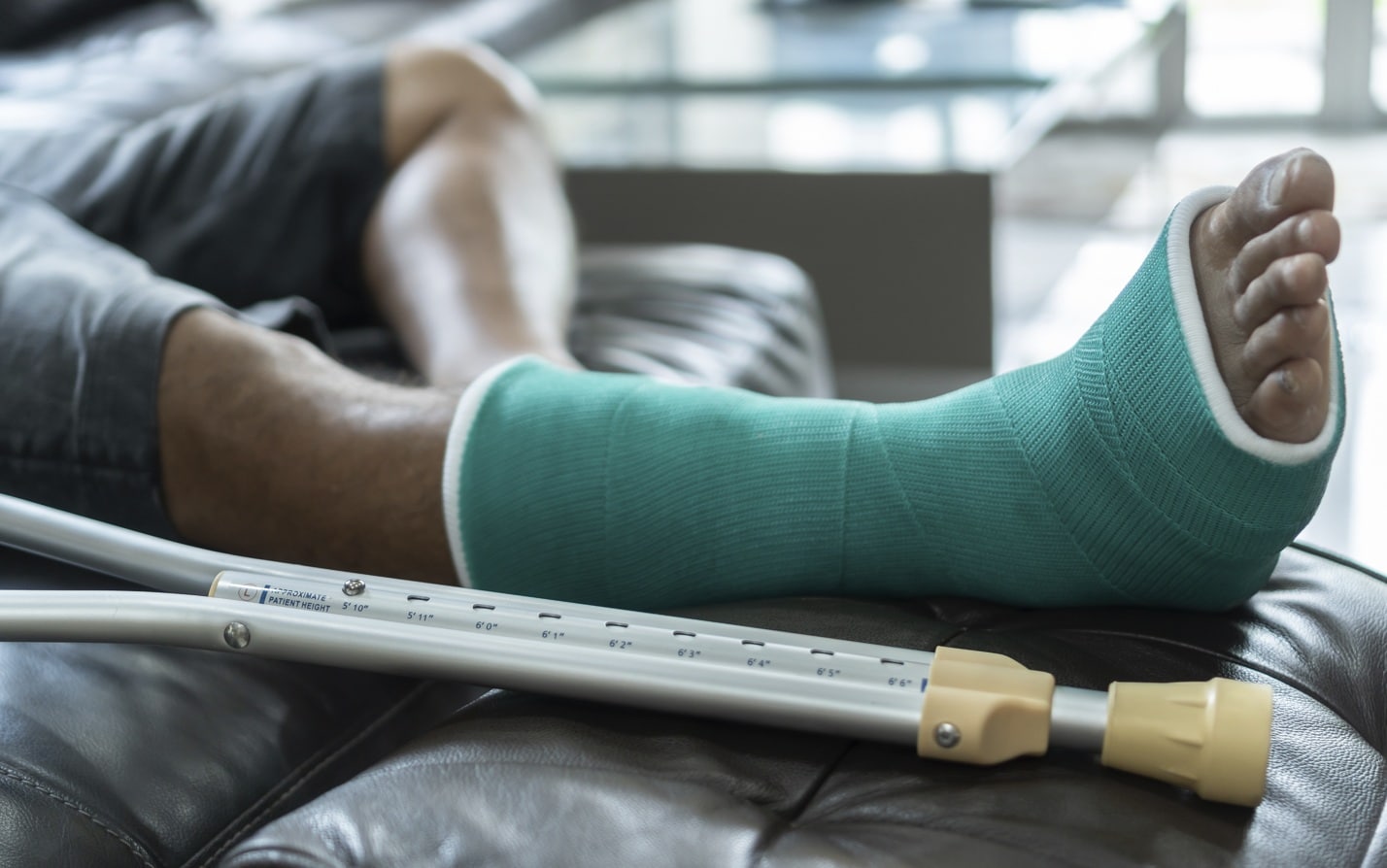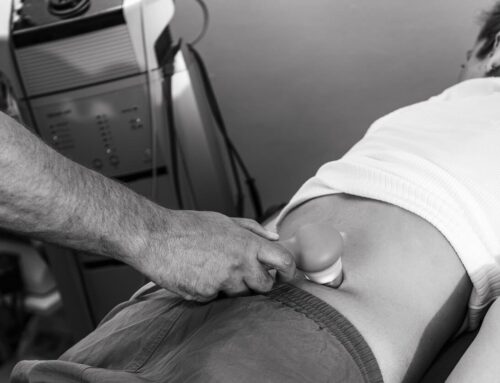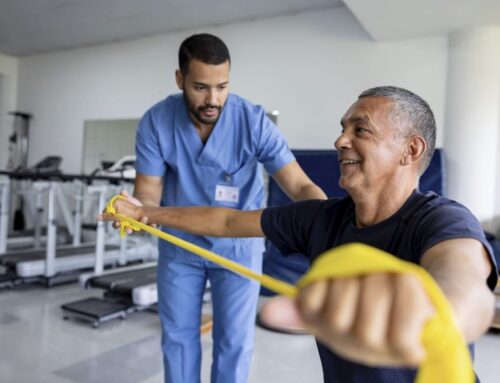Whether hiking or mountain biking on nearby trails, beachcombing North Carolina shores, playing organized sports, walking around the neighborhood or working on the job, accidents happen. Bone fractures, or broken bones, are very common, with more than six million people experiencing one each year.
The important role bones play in the body
Our bones provide many important functions. They make up the basic structure of the body, allow it to move, protect vital organs, allow us to breathe and help make blood. When a bone is broken, there can be serious consequences if it doesn’t receive the treatment to heal properly.
This article will discuss what a bone fracture is, common types of fractures, how a fractured bone is diagnosed and how to treat a fracture for the best recovery.
What is a bone fracture?
A bone fractured refers to a cracked or broken a bone. While the average person may say they broke a bone, your medical team will refer to the injury as a fracture, regardless of the size.
Fractures happen due to stress placed on a bone or bones, most often due to trauma, disease or repetitive stress. Your bone may need help to heal without a deformity.
A fracture is different than a sprain. A sprain is an injury to a ligament, the tissue that connects your bones at the joints and helps you move. Both are painful, but treatments differ for broken bones and sprains.
Orthopaedic doctors specialize in bones and joints injuries. They help patients recover from a broken bone by decreasing pain and obtaining the greatest mobility possible. While a hospital emergency room team can stabilize your fracture, following up with an orthopaedic doctor is wise to ensure you get the best outcome.
Diagnosing a fracture
When a bone is fractured, you may hear a snapping or popping sound, followed by pain or numbness, tingling, swelling and bruising. The body part may look deformed and it may be painful to put weight on or touch the area around the injury.
You should immediately seek care for a broken bone to prevent further injury and manage your pain. Depending on the severity of the injury and your level of pain, go to a hospital emergency department or an orthopaedic urgent care.
Your medical provider will ask about how the injury occurred and your symptoms. They will perform a physical examination and likely order diagnostic imaging to see the extent of your injury.
They may have an x-ray, CT scan or MRI done of your injury to give an accurate diagnosis. Each test provides a different view of the internal structures of the body. Once the imaging results are back, your orthopaedic doctor will discuss what kind of fracture you have and how to treat it.
Types of bone fractures
There are many types of fractures. Your orthopaedic physician will diagnose your fracture based on where you broke the bone, how it was broken and the shape of the fracture. Some of the most common fractures include:
- Stress fracture or hairline fracture – a small crack in the bone that often happens from overuse. This type of break usually affects the weight-bearing bones of the leg, such as the shinbone or thighbone. Given its small size, a stress fracture may not show up on an X-ray right away.
- Greenstick fracture – when the bone cracks but does not break all the way through. It usually happens to children because their bones are softer than adult bones.
- Comminuted fracture – when the bone shatters into more than two pieces.
- Transverse fracture – a fracture that runs horizontally across the width of the bone in a straight line. These are almost always caused by a fall or car accident and may require surgery.
- Oblique fracture – a fracture that breaks the bone completely, but at an angle.
- Open or compound fracture – when the bone is displaced, or significantly separated from the other part of the bone, piercing through the skin.
Treatment for fractured bones
Following your diagnosis, your doctor will recommend a course of treatment for your fracture. Various treatment options include:
Immobilization
If the fracture is not significant and the bones did not move too far out of place, your doctor may splint or cast the body part. This immobilizes the body part and protects it from movement or shifting for a few weeks, so your bone can heal.
Once the splint or cast is removed, your physician will check the area with an X-ray to ensure it has healed correctly.
If the bone does not heal within the prescribed timeframe, other interventions may be needed to stimulate growth. If the bone still does not heal, surgery may be required.
Fracture reduction / internal and external fixation
More severe injuries, like comminuted or compound fractures, may require reduction. Reduction means the physician will realign the bones for optimal healing.
An orthopaedic physician sets a bone without surgery in a closed reduction. In this procedure, the patient receives pain medication or light sedation. The physician pulls the broken bones apart, rotates them if necessary, and realigns them with gentle pressure. A cast or splint is then applied to immobilize the injury.
To perform an open reduction, a board-certified orthopaedic surgeon makes an incision near the fracture, then realigns the bones. A rod, plates, pins and/or screws may be utilized to ensure the bones stay in place. Surgicallly placing a rod or plates alongside the bone is referred to as internal fixation.
External fixation places screws into the bones above and below the fracture and connects them to a device outside of the skin. This allows for immobilization and adjustments to realign the bones.
Recovering from a bone fracture
Recovery from a fracture can take weeks to months, depending on the severity of the break and treatments needed. Following a fracture and immobilization or surgery, you may need rehabilitation to fully recover.
As your fracture heals, it is important to rest. Eating a healthy diet full of vitamins and minerals is important – specifically calcium and vitamin D.
Physical therapy can help you regain strength, restore your range of motion and prevent muscle atrophy. Your physical therapist will work with you to grow stronger, gradually add weight and improve function.
Trust Cary Orthopaedics’ board-certified orthopedic surgeons
The journey from fracture to full recovery requires the medical expertise of a trusted orthopaedic team who can treat your bone fracture and help you experience the best recovery possible.
The board-certified surgeons and specialized care team at UNC-Cary Orthopaedics have helped thousands of North Carolinians recover from fractures. Our evidence-based approach combines the latest treatment techniques with personalized rehabilitation plans, ensuring you received optimal healing and function.
Contact Cary Orthopaedics today to start your journey to recovery with trusted orthopedic experts.






